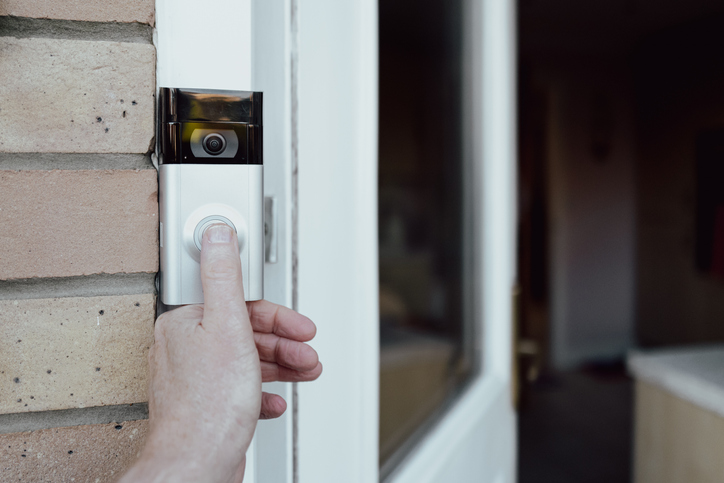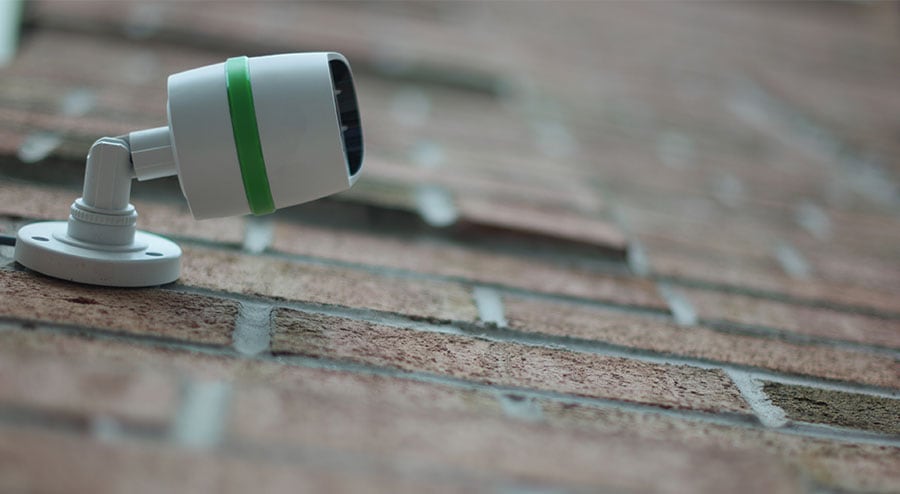Home security holds immense importance within homeowners associations, as it directly impacts the safety and well-being of residents. For these communities, fostering a sense of security is not merely an option but a fundamental responsibility. A robust home security plan is crucial for ensuring a safe and harmonious living environment, where residents can feel protected and at ease within their homes and common areas.

In a homeowners association, the collective safety of the community is a shared endeavor that requires the active participation of residents, management, and security personnel. By acknowledging the significance of home security, these associations can implement comprehensive measures to prevent and address security concerns effectively.
- Establishing a Comprehensive Home Security Plan
- Collaborating for Enhanced Security
- Leveraging Technology for Home Security
- Addressing Specific Security Concerns
- Security Assessments and Emergency Protocols
- Funding and Resources for Home Security
- Lighting, Landscaping, and Surveillance
- Looking Ahead
- The Takeaway
Collective safety efforts within homeowners associations revolve around uniting all stakeholders to work collaboratively toward a safer community. These efforts encompass various aspects of home security, including but not limited to physical infrastructure, technology, communication, and community engagement.
Through a comprehensive home security plan, homeowners associations can establish a foundation for effective security measures. This plan incorporates essential components like access control, surveillance systems, and emergency protocols. Striking a balance between security measures and privacy concerns ensures residents feel safe without compromising their individual freedoms.
Establishing a Comprehensive Home Security Plan
A well-designed home security plan forms the foundation for a safe and secure homeowners association.
Essential Components of a Home Security Plan
Several key components contribute to the effectiveness of a home security plan. First and foremost, robust access control systems play a crucial role in regulating entry and exit points, and preventing unauthorized access to the community. This may include secure entry gates, key cards, or smart access technologies.
In addition to access control, surveillance systems are essential for monitoring the community’s common areas and potential blind spots. High-quality CCTV cameras strategically placed throughout the neighborhood can act as a powerful deterrent to criminal activities. Furthermore, well-maintained lighting in public spaces and pathways ensures visibility at night, reducing the risk of accidents and deterring potential intruders.
Emergency preparedness is equally vital in a comprehensive home security plan. Installing alarms and intercom systems can help alert residents in case of emergencies or suspicious activities. Collaborating with local law enforcement and establishing communication protocols ensures a coordinated response during critical situations.
Balancing Privacy Concerns and Security Measures
While implementing security measures, it’s crucial for homeowners associations to consider residents’ privacy rights. Striking the right balance between enhancing security and respecting individual privacy fosters a harmonious living environment. Transparent communication with residents about the security plan and the reasons behind each measure helps build trust and support for these initiatives.
Opting for security solutions that minimize intrusiveness, such as using cameras only in public areas rather than private spaces, demonstrates a commitment to privacy while still maintaining community safety. Additionally, clear guidelines on the use of collected data and measures to protect residents’ personal information from data breaches are essential.
Addressing Cybersecurity Concerns with Smart Home Devices
The increasing adoption of smart home devices offers convenience and automation but also introduces potential cybersecurity risks. Homeowners associations must be proactive in addressing these concerns to safeguard residents’ digital security. Encouraging residents to secure their smart devices with strong passwords and regularly updating firmware can prevent unauthorized access.
Moreover, educating residents about potential cyber threats and common phishing attempts enhances their awareness and reduces the likelihood of falling victim to scams. Collaborating with reputable technology providers that prioritize cybersecurity in their products can also help mitigate risks.
A comprehensive home security plan requires a thoughtful approach, incorporating essential components like access control, surveillance, and emergency preparedness. Finding the delicate balance between security measures and privacy concerns ensures that residents feel secure while maintaining their individual freedoms. Addressing cybersecurity concerns associated with smart home devices is vital to protect the community’s digital landscape from potential threats. Homeowners associations should consider these factors to create a safer and more secure environment for all residents.
Collaborating for Enhanced Security
Collaboration serves as a cornerstone for enhancing security within homeowners associations. Residents become proactive participants in safeguarding their community, by fostering a culture of security awareness.
Promoting a Culture of Security Awareness Among Residents
In the pursuit of a safer community, homeowners associations play a vital role in fostering a culture of security awareness among residents. Education and outreach initiatives can empower homeowners to recognize potential security threats and take preventive measures. HOAs can conduct workshops, and seminars, or distribute informative materials to raise awareness about common security risks, such as burglary, package theft, and vandalism.
Encouraging residents to report suspicious activities promptly contributes to a collective effort to maintain community safety. Regular reminders via newsletters or online platforms help reinforce the importance of remaining vigilant. A strong sense of shared responsibility encourages residents to become active participants in protecting their homes and neighbors.
Creating Effective Communication Channels for Security Concerns
Open and effective communication channels are vital for addressing security concerns within homeowners associations. Establishing platforms for residents to voice their security-related questions or report incidents can foster a proactive and supportive community. A dedicated email address or a community hotline ensures that security matters are promptly directed to the appropriate authorities or security personnel.
Prompt responses to security-related queries and incidents reinforce the trust between residents and the homeowners association. Regular updates on security initiatives and ongoing projects keep the community informed and engaged. Additionally, utilizing social media platforms or community forums can enhance real-time communication, making it easier to share important security updates.
Involving Residents in Neighborhood Watch Programs
Neighborhood watch programs have proven to be effective in enhancing security and fostering a sense of unity within homeowners associations. HOAs can create a network of vigilant residents who actively look out for one another, organizing and encouraging residents to participate in neighborhood watch initiative
Regular meetings or online forums for watch program participants allow for the exchange of information and the discussion of security-related concerns. These programs not only serve as an additional layer of security but also strengthen community bonds and increase residents’ sense of ownership and pride in their neighborhood.
Effective communication channels ensure that security concerns are addressed promptly, fostering a strong relationship between residents and the HOA. Engaging residents in neighborhood watch programs establishes a proactive and vigilant community, making it a safer place to call home.
Leveraging Technology for Home Security
In the ever-evolving landscape of home security, technology plays a pivotal role in empowering homeowners associations to bolster their safety measures.
Role of Technology in Improving Home Security
In the digital age, technology plays a pivotal role in enhancing home security within homeowners associations. Smart home devices and cutting-edge solutions provide advanced surveillance and access control, bolstering the overall safety of the community.
One significant technology is the implementation of smart surveillance systems like the Arlo Ultra 4K UHD Wire-Free Security Camera System. This system offers high-resolution video monitoring with advanced motion detection capabilities, enabling real-time alerts to residents and the homeowners association’s security personnel when suspicious activities are detected. The Arlo Ultra 4K UHD system typically costs between $500 to $700, depending on the number of cameras and additional features.
Another essential component is smart access control, such as the August Wi-Fi Smart Lock Pro. This device allows residents to control their home’s locks remotely, providing secure access to authorized individuals while keeping intruders at bay. The August Smart Lock Pro is available for approximately $200 to $300, depending on the version and included accessories.
Innovative Security Solutions for Homeowners Associations
Embracing innovative security solutions can significantly augment a homeowners association’s safety efforts. One such solution is the use of drones for aerial surveillance, like the DJI Phantom 4 Pro V2.0. Equipped with high-resolution cameras and intelligent flight modes, drones can efficiently monitor large areas and provide real-time video feeds to security teams. The DJI Phantom 4 Pro V2.0 drone is priced at around $1,500 to $1,800, depending on the package and accessories.
Another great technology is the Ring Alarm Home Security System. This comprehensive system includes a base station, contact sensors, motion detectors, and a range extender, providing complete coverage for a residence. Residents can monitor and control the system through a smartphone app, and the Ring Alarm Security System costs approximately $200 to $300, depending on the package and additional devices.
Cybersecurity Measures for Protecting Home Networks
As the adoption of smart home devices increases, ensuring cybersecurity measures is of utmost importance to protect residents’ privacy and digital security. Homeowners associations can educate residents about the significance of securing their home networks and devices.
Encouraging the use of Virtual Private Networks (VPNs) to encrypt internet connections when accessing smart home devices remotely can safeguard against potential cyber threats. Popular VPN services like NordVPN and ExpressVPN offer secure connections for as low as $5 to $10 per month, depending on the subscription plan.
Additionally, homeowners associations can collaborate with reputable cybersecurity companies to conduct workshops or webinars addressing common cyber threats, providing residents with essential knowledge to recognize and prevent potential risks.
Incorporating these technological advancements and cybersecurity measures, homeowners associations can build a robust security infrastructure that not only deters potential intruders but also protects residents’ digital lives, creating a safer and technologically savvy community.
Addressing Specific Security Concerns
It is important for Homeowners Associations to be aware of security concerns like package theft and absent homeowners in order to protect their communities from these security threats.
Preventing Package Theft and Property-Related Crimes
Package theft and property-related crimes are prevalent concerns for homeowners associations, particularly in residential communities with regular deliveries. To combat package theft, homeowners associations can implement various preventive measures. Installing secure package lockers or designated delivery areas with surveillance cameras can deter potential thieves. Additionally, encouraging residents to track their deliveries and retrieve packages promptly can minimize the window of opportunity for theft.
To address property-related crimes, homeowners associations should focus on enhancing overall security measures. Well-lit pathways, thorough monitoring through surveillance cameras, and regular security patrols contribute to a safer environment. Building a strong sense of community awareness, where residents look out for one another, can also serve as an effective deterrent.
Enhancing Security Measures for Absent Homeowners
Homeowners associations must address the security concerns of residents who frequently travel or are absent from their homes for extended periods. Encouraging residents to notify the HOA of their absence allows for extra vigilance and monitoring during their time away. Consider implementing a vacation watch program where security personnel or neighbors keep an eye on vacant properties and report any suspicious activities.
Moreover, residents can take proactive steps to enhance security during their absence. Temporarily suspending regular mail deliveries or arranging for a neighbor to collect mail and packages can minimize the appearance of an empty home. Smart home devices, such as lights on timers and remotely controlled curtains, create the illusion of occupancy, further deterring potential intruders.
Protecting Common Areas from Security Threats
Homeowners associations must prioritize the security of common areas, as they are the heart of community life. Implementing access control systems for common facilities like gyms, pools, and clubhouses ensures that only authorized residents have entry. Surveillance cameras strategically placed in these areas help monitor activities and promptly identify any security breaches.
Collaborating with reputable security companies to conduct risk assessments of common areas can provide valuable insights into vulnerabilities and necessary security upgrades. Regular maintenance and inspection of security equipment, such as cameras and access control devices, ensure their optimal functionality.
Addressing specific security concerns is paramount for homeowners associations aiming to create a safe and secure living environment for their residents. Preventing package theft and property-related crimes involves a combination of preventive measures and community awareness. Enhancing security for absent homeowners requires proactive steps from both residents and the homeowners association. Protecting common areas demands strategic access control and surveillance to safeguard community spaces effectively. By addressing these specific concerns, homeowners associations can significantly improve overall security and instill peace of mind among residents.
Security Assessments and Emergency Protocols
Regular security assessments are fundamental in identifying vulnerabilities and ensuring the effectiveness of security measures within homeowners associations. It is equally important that HOAs know how to handle security emergencies by working with local law enforcement.
Conducting Regular Security Assessments in the Community
Conducting thorough security assessments, ideally performed by experienced security professionals, allows the HOA to gain insights into potential weak points in the community’s security infrastructure. These assessments may include evaluating access control systems, surveillance camera coverage, lighting effectiveness, and emergency response protocols.
Homeowners associations can stay ahead of emerging threats and adapt their security strategies accordingly, by performing periodic security assessments. Addressing identified weaknesses promptly can significantly reduce the risk of security incidents and enhance the overall safety of the community.
How Homeowners Associations Handle Security Incidents and Emergencies
A well-defined and practiced emergency response plan is critical for homeowners associations to effectively manage security incidents and emergencies. This plan should outline clear procedures for various scenarios, such as burglaries, vandalism, or natural disasters. Key personnel, including security personnel, board members, and property managers, should be trained on their roles and responsibilities during emergencies.
Establishing a central communication system, such as a dedicated emergency hotline or mass notification platform, ensures swift dissemination of critical information to residents. Collaborating with local law enforcement and emergency services is essential for a coordinated response during serious incidents. Regular emergency drills and tabletop exercises help familiarize residents and HOA staff with the response procedures, ensuring a more effective and efficient reaction during real emergencies.
Working with Law Enforcement for Community Safety
Homeowners associations can forge valuable partnerships with local law enforcement agencies to enhance community safety. Regular meetings with law enforcement officials provide opportunities to discuss security concerns, exchange information about criminal trends in the area, and develop effective crime prevention strategies.
Law enforcement agencies can offer guidance on implementing crime prevention through environmental design (CPTED) principles. This includes recommendations on lighting, landscaping, and architectural changes that can deter criminal activities and create a more secure environment.
Moreover, collaborating with law enforcement for community policing initiatives, such as neighborhood watch programs, fosters a sense of shared responsibility for safety among residents and local authorities.
Security assessments and emergency protocols are integral components of a robust security strategy for homeowners associations. Regular assessments enable HOAs to identify vulnerabilities and adapt their security measures proactively. A well-practiced emergency response plan ensures a swift and coordinated reaction during security incidents and emergencies, enhancing the safety of residents. Partnering with law enforcement agencies further strengthens community safety efforts and fosters a sense of collaboration and security among homeowners and local authorities.
Funding and Resources for Home Security
Grants and funding opportunities for security infrastructure are available and ensuring that all residents are well-informed about available home security resources is vital in fostering a safer community.
Grants and Funding Opportunities for Security Infrastructure
Investing in comprehensive security infrastructure can be a substantial undertaking for homeowners associations. Fortunately, various grants and funding opportunities are available to support these efforts. HOAs can explore local, state, or federal grant programs dedicated to community safety, crime prevention, or neighborhood improvement initiatives. Non-profit organizations and foundations may also offer grants specifically tailored to enhancing home security in residential communities.
To increase the chances of securing funding, homeowners associations should thoroughly research eligibility criteria and application requirements for each grant opportunity. Crafting a compelling proposal that highlights the community’s security needs, the anticipated impact of the project, and the commitment of residents to collective safety efforts can significantly strengthen their grant applications.
Educating Residents on Available Home Security Resources
Homeowners associations can take proactive steps to educate residents on security best practices, technologies, and community-wide safety initiatives. This can be achieved through various means, such as organizing security workshops, distributing informational brochures, or hosting seminars with security experts.
Collaborating with local law enforcement or security professionals to conduct educational sessions can provide valuable insights and practical tips for residents. Additionally, leveraging digital platforms like community websites or social media channels to share security-related news, resources, and updates ensures that information reaches a wider audience promptly.
Accessing funding opportunities and educating residents on available home security resources are crucial aspects of collective safety efforts within homeowners associations. Securing grants allows HOAs to implement robust security infrastructure while educating residents empowers them to actively participate in safeguarding their community. By combining these efforts, homeowners associations can create a safer living environment that fosters a sense of security and peace of mind for all residents.
Lighting, Landscaping, and Surveillance
Proper lighting and landscaping are essential for creating a well-illuminated and secure living environment within homeowners associations.
Improving Community Safety through Proper Lighting and Landscaping
Proper lighting and landscaping are integral components of an effective home security strategy for homeowners associations. Well-lit common areas, pathways, and entry points significantly reduce the risk of accidents and criminal activities. Adequate lighting serves as a natural deterrent to potential intruders, as well-lit spaces minimize hiding spots and create a sense of visibility and safety for residents.
Strategic landscaping can also contribute to community safety. Homeowners associations should ensure that shrubs and trees are pruned to maintain clear sightlines and prevent potential hiding spots. Implementing low-lying plants near windows and entrances improves visibility while providing an aesthetically pleasing environment. Incorporating lighting and landscaping elements thoughtfully allows homeowners associations to create a more secure and inviting community for all residents.
The Role of Security Patrols and Surveillance in Home Security
Security patrols and surveillance play a crucial role in enhancing home security within homeowners associations. Dedicated security personnel patrolling the community can act as a visible deterrent, deterring potential criminals and providing reassurance to residents. Randomized patrol schedules and varying patrol routes further increase their effectiveness in preventing crime.
Surveillance cameras, strategically placed throughout the community, provide continuous monitoring and documentation of activities in common areas. The presence of visible cameras alone can discourage criminal activities. Moreover, recorded footage can serve as valuable evidence in the event of an incident, aiding law enforcement in investigations.
To maximize the benefits of security patrols and surveillance, homeowners associations should collaborate closely with their security providers and law enforcement. By sharing information and coordinating efforts, security personnel can respond promptly to incidents, further enhancing the safety and security of the community.
Looking Ahead
It is important for HOAs to consider the long-term benefits of collective security to ensure a safer community.
The Long-Term Benefits of Collective Security Efforts in Homeowners Associations
Collective security efforts within homeowners associations yield a host of long-term benefits that extend beyond the immediate safety of residents. This collective approach not only deters potential criminals but also enhances overall community well-being and quality of life.
Implementing comprehensive home security plans, leveraging advanced technologies, and conducting regular security assessments contribute to a safer living environment. As residents actively participate in neighborhood watch programs and communicate through effective channels, their vigilance and cooperation strengthen the community’s security fabric. The adoption of innovative security solutions, coupled with cybersecurity measures, protects both physical and digital aspects of the community, safeguarding residents’ assets and personal information.
The Path Forward for a Safer and Secure Community
As the path forward for a safer and secure community, homeowners associations must continue to prioritize collective safety efforts and proactive security measures. Regularly updating security infrastructure, embracing cutting-edge technologies, and refining emergency protocols ensure that the community stays ahead of potential threats. Homeowners associations that forge partnerships with local law enforcement, maximize their security efforts, benefiting from expert advice and timely support.
Moreover, empowering residents with knowledge about available home security resources and engaging them in security initiatives fosters a stronger and more resilient community. Educating residents about the importance of security awareness and the significance of reporting suspicious activities strengthens the community’s capacity to respond effectively to security challenges.
Collective security efforts lie at the core of homeowners associations’ commitment to a safer living environment. Promoting a culture of security, investing in innovative technologies, collaborating with law enforcement, and engaging residents in security initiatives, allows homeowners associations to pave the way towards a safer, more secure, and harmonious community for all its residents.
The Takeaway
Homeowners associations can achieve a safer and more secure community by prioritizing collective security efforts, leveraging advanced technologies, fostering a culture of security awareness among residents, and collaborating with local law enforcement.




